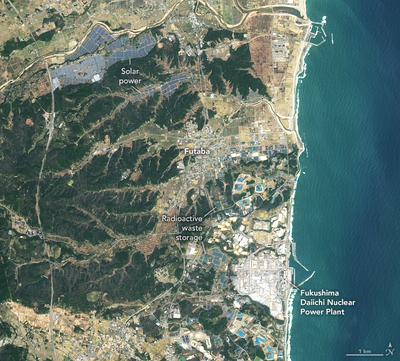Abandoned farms near the Fukushima nuclear power plant are now the site of solar arrays. NASA
More than a decade after a major nuclear power plant disaster, Fukushima, Japan is seeing extensive renewable energy development on abandoned lands, as satellite imagery from NASA shows.
When an earthquake and resulting tsunami hit the Fukushima Daiichi Nuclear Power Plant in 2011, damaged reactors released radioactive material into the surrounding area, rendering large swaths of farmland unusable. Today, some of those fields are home to sprawling solar arrays.
The Fukushima prefecture has set a goal of 100 percent renewable power by 2040. Around 40 precent of its power currently comes from renewables, with plans underway to spend $2.75 billion on the development of 11 solar farms and 10 wind farms on contaminated or abandoned lands.
“A strong desire to never see a repeat of such an accident was the most important starting point” for Fukushima’s renewable push, Noriaki Saito, energy director at the prefecture’s planning department, told AFP.



